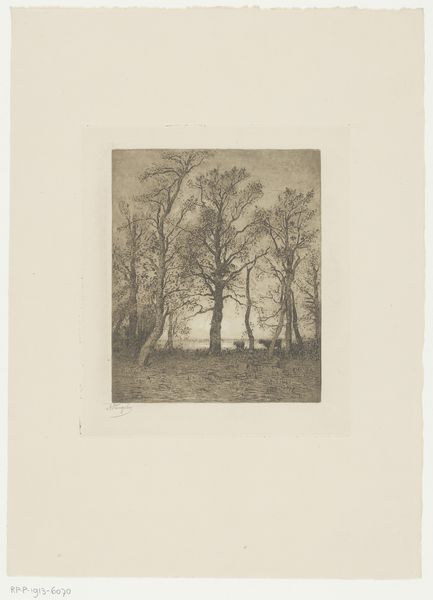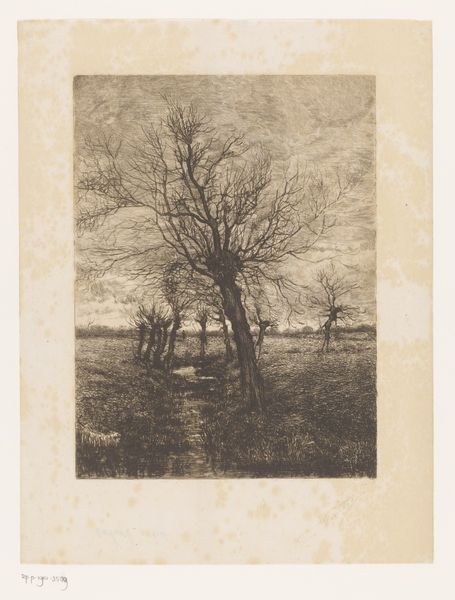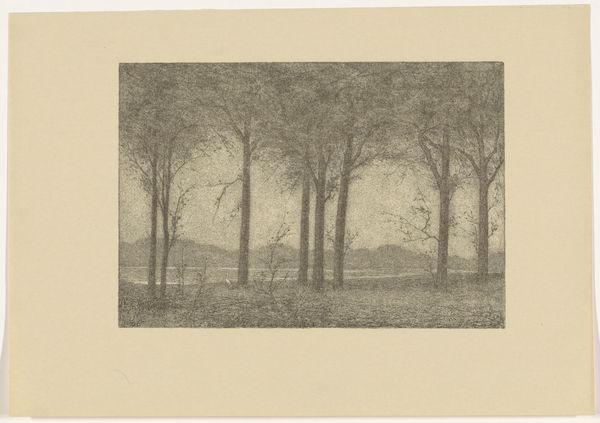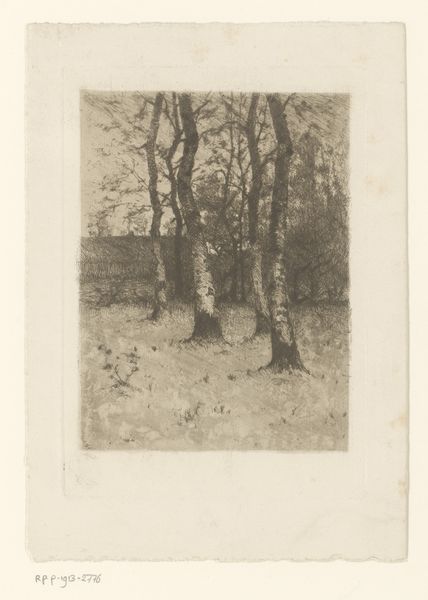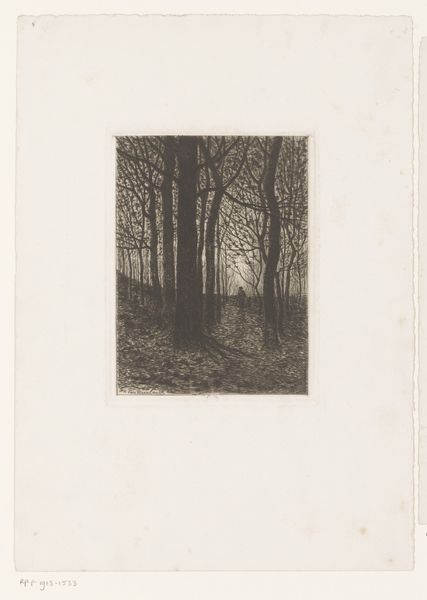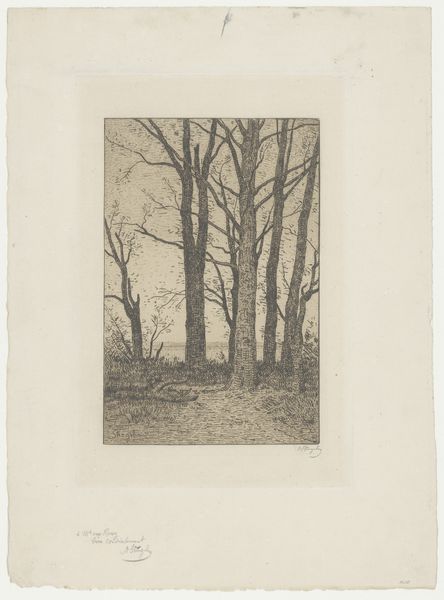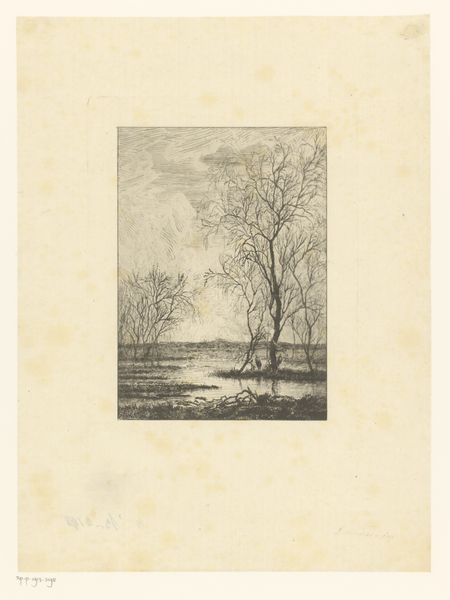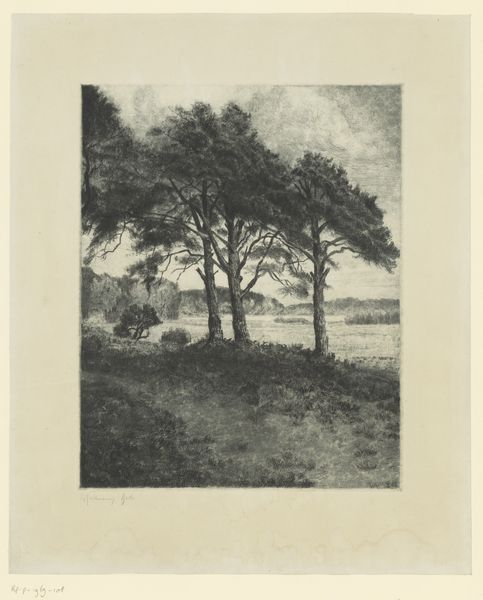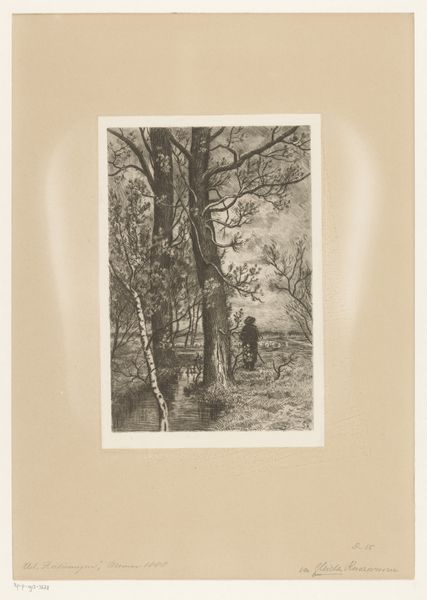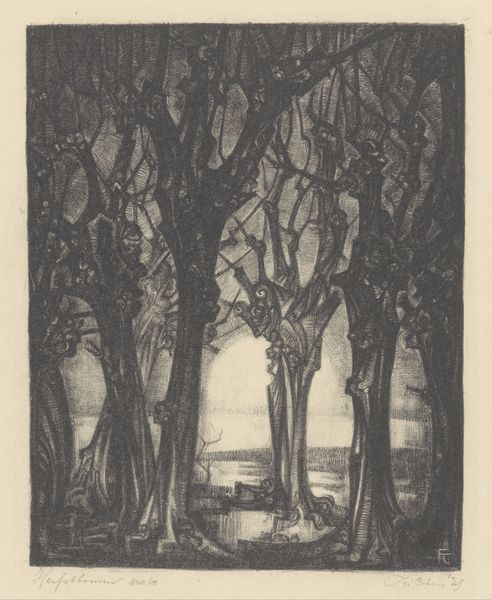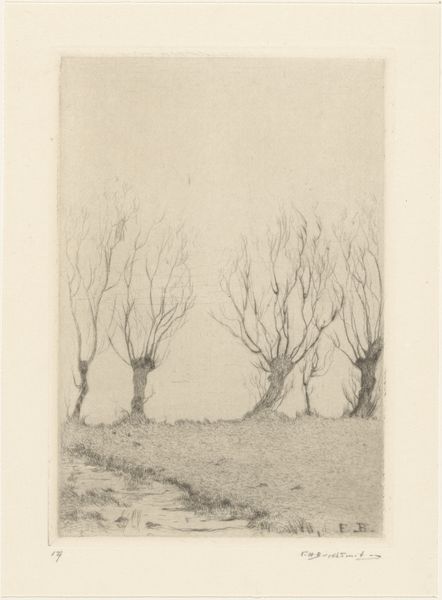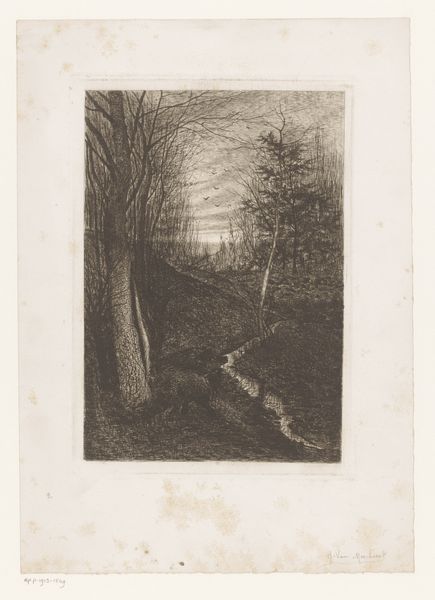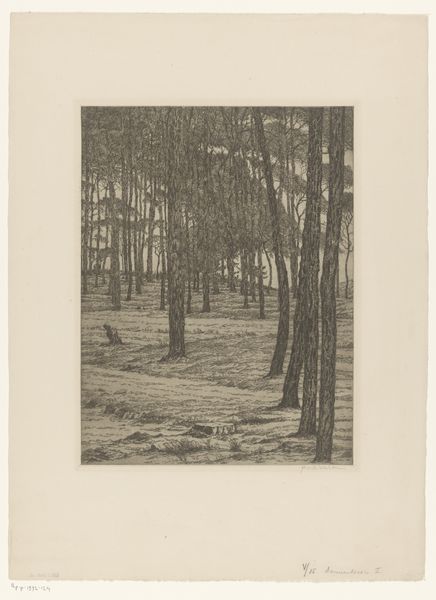
Dimensions: height 324 mm, width 240 mm
Copyright: Rijks Museum: Open Domain
Curator: Alphonse Stengelin’s "Landschap met schapen bij zonsondergang", created sometime between 1903 and 1938, is a beautiful example of landscape etching. Editor: It immediately evokes a feeling of melancholy. The dark foreground, those silhouetted trees… a sort of pre-industrial pastoral scene. It feels quite Romantic in spirit. Curator: The Romantic spirit definitely resonates. The etching captures a serene moment, almost a return to simpler times, and the setting sun perhaps symbolizes closure or transition. How interesting that such symbolism echoes throughout landscape imagery. Editor: It is precisely the romanticism I find fascinating—yet somewhat problematic. Who *exactly* is experiencing this simple pastoral life? There's a distinct power dynamic here. Someone has ownership, or at least control, over the land and these sheep. Is this truly about an everyman connection to the earth, or a carefully curated tableau of privilege? Curator: Your point is well-taken; such scenes can certainly function as idealized projections. Perhaps it also reflects the artistic movements of the time. The Impressionists and those that followed often sought refuge from modernity in the natural world. And that is echoed here by Stengelin’s stylistic decisions, as the texture, and atmospheric perspective emphasize a mood rather than photographic accuracy. The hazy light is what carries much of the image’s feeling. Editor: Precisely! That dreamy haziness romanticizes the scene, perhaps obscuring those underlying realities. It allows the viewer to project a specific narrative. But the sun, acting as a sort of background halo—is this landscape sacred, somehow? Or simply safe, a retreat for those who need not toil as shepherds? Curator: It’s that visual tension—the sublime beauty tinged with melancholy—that really pulls me in. Regardless of any societal commentary, which is of course important, there remains a persistent symbolism to sunsets—of ending, yes, but also of hope. What will tomorrow bring, beyond the trees? Editor: Indeed. Whether as a statement about agrarian ideals, class structures, or even individual longing, the print leaves space for us to interpret its significance within a contemporary lens. Its very beauty ensures it will always ask relevant questions, never ceasing to engage the viewers of today.
Comments
No comments
Be the first to comment and join the conversation on the ultimate creative platform.
